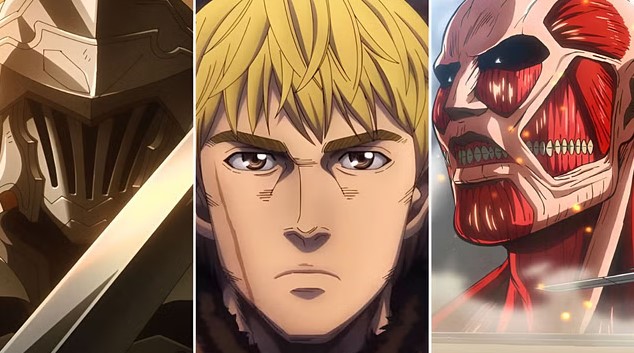
In the dynamic and ever-evolving world of Korean comics, known as manhwa, one genre has gained increasing popularity among readers worldwide—manhwa revenge. These stories, rich with intense emotions, deep psychological conflicts, and elaborate plots, delve into the complexities of retribution, moral justice, and human resilience. In recent years, the genre has seen a surge in attention as readers seek out tales that combine thrilling action with deep-rooted emotional narratives. Whether centered on personal betrayal, societal injustice, or supernatural retribution, these revenge stories tap into universal themes that transcend cultural boundaries.
1. The Rise of Revenge Manhwa in Modern Korean Media
The revenge trope is hardly new in global literature, yet manhwa writers and artists have reimagined this theme with unique cultural and artistic expressions. South Korea’s history of rapid modernization, social stratification, and shifting moral values provides fertile ground for narratives of revenge that resonate strongly with readers.
One of the reasons for the genre’s growing appeal is its versatility. Revenge stories can span across multiple genres—romance, fantasy, crime, horror, and historical fiction—while still maintaining a core narrative of justice and retaliation. Notable series such as “Bastard”, “Sweet Home”, and “The Devil’s Boy” have made significant marks in the webtoon community, each bringing fresh perspectives on vengeance and the moral ambiguity surrounding it.
Modern revenge manhwa often explores a deeper psychological space. The protagonist isn’t always a clear-cut hero but often a morally grey character driven by trauma or injustice. This makes the stories not only more relatable but also more intellectually engaging, as readers must grapple with questions of right and wrong alongside the character.
Subheading: Psychological Depth in Revenge Narratives
Many manhwa revenge stories dig deep into the psyche of the main characters, especially protagonists who have endured unimaginable pain. These narratives often begin with a seemingly helpless character who undergoes transformation—mentally, emotionally, and sometimes even physically—before executing a carefully crafted plan for retribution.
Take, for example, “Lookism”, which cleverly uses body transformation to explore themes of discrimination, power, and revenge. Similarly, “Noblesse” wraps its revenge arc in supernatural elements but still focuses on justice and moral redemption. These stories present revenge not merely as a destructive force, but also as a journey toward healing or self-empowerment.
Incorporating mental health issues, such as PTSD, depression, and anxiety, into these narratives makes them not only thrilling but also relevant to modern audiences who may see parts of themselves in the protagonists’ pain and struggle.
2. Common Themes and Symbolism in Manhwa Revenge Stories
Though the narratives differ widely, most manhwa revenge stories share certain recurring themes and symbols that make the genre recognizable and impactful. One such theme is justice vs. vengeance—a philosophical tension that examines whether revenge is morally justifiable or simply perpetuates a cycle of violence.
Another recurring element is corruption and power dynamics. Many of these stories critique societal systems—be it schools, corporations, or governments—that fail to protect the vulnerable. Characters often take justice into their own hands not out of pure hatred, but because institutional avenues for justice have failed them.
Family betrayal is also a frequent motif. Unlike Western revenge narratives that often focus on romantic betrayal, Korean manhwa tends to delve into familial conflict. Stories like “My Father Is a Tyrant” or “The Villainess Turns the Hourglass” showcase characters seeking revenge against those closest to them, revealing the emotional complexity and depth of their vendettas.
Symbolism plays a strong role as well. Visual cues such as broken mirrors, blood-red skies, or shattered clocks often symbolize fractured identities, loss of time, or irreversible trauma. These artistic elements enrich the storytelling and enhance reader immersion.
3. The Ethical Landscape: Justice or Justification?
Revenge, as depicted in manhwa, isn’t always about inflicting pain. Often, it’s portrayed as a pursuit of balance—a way to right a wrong that has gone unanswered. But this brings up the ethical dilemma: Is revenge ever truly justified?
Many creators use their stories to present both sides of this argument. Some protagonists achieve closure only to find that their thirst for vengeance has left them empty. Others find empowerment, transformation, or even forgiveness through their journey. This duality keeps the genre from becoming formulaic and instead opens up nuanced discussions about justice, retribution, and the human condition.
Additionally, the manhwa revenge genre challenges readers to examine their own values. Would you forgive someone who wronged you deeply? What would you do if the law failed to protect your loved ones? These reflective questions keep the genre emotionally and intellectually engaging.
In conclusion, manhwa revenge is more than just tales of tit-for-tat retribution—it’s a genre that dives into the moral gray areas of justice, identity, and human psychology. By combining gripping narratives with strong emotional undercurrents and social commentary, these stories captivate a global audience and provoke thought about the true cost of vengeance. As the genre continues to evolve, it remains a powerful mirror reflecting not only personal pain but also broader societal issues, making it one of the most compelling forms of storytelling in modern Korean media.